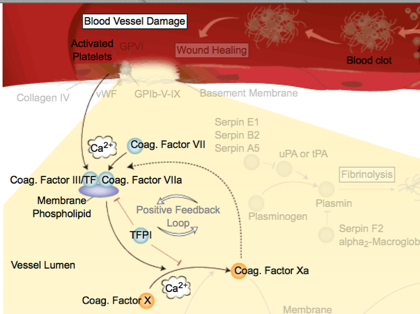-
Factor V Leiden 5b카테고리 없음 2020. 2. 10. 15:08
Jul 15, 2018 - It's leads to a condition called factor V Leiden thrombophilia. It works like this: Factor V (factor 5) is one of several special proteins in your blood.
Symptoms The factor V Leiden mutation does not itself cause any symptoms. Since factor V Leiden is a risk for developing blood clots in the leg or lungs, the first indication that you have the disorder may be the development of an abnormal blood clot. Some clots do no damage and disappear on their own. Others can be life-threatening. Symptoms of a blood clot depend on what part of your body is affected. A clot in a deep vein This is known as deep vein thrombosis (DVT), which most commonly occurs in the legs. A DVT may not cause any symptoms.
If signs and symptoms do occur, they can include:. Pain. Swelling. Redness. Warmth A clot that travels to your lungs Known as a pulmonary embolism, this occurs when a portion of a DVT breaks free and travels through the right side of your heart to your lung, where it blocks blood flow. This can be a life-threatening situation.
Signs and symptoms may include:. Sudden shortness of breath. Chest pain when breathing in. A cough that produces bloody or blood-streaked sputum.
Rapid heartbeat When to see a doctor Seek medical attention immediately if you have signs or symptoms of either a DVT or a pulmonary embolism. Causes If you have factor V Leiden, you inherited either one copy or, rarely, two copies of the defective gene.
Inheriting one copy slightly increases your risk of developing blood clots. Inheriting two copies — one from each parent — significantly increases your risk of developing blood clots. Risk factors A family history of factor V Leiden increases your risk of inheriting the disorder. The disorder is most common in people who are white and of European descent. People who have inherited factor V Leiden from only one parent have a 5 percent chance of developing an abnormal blood clot by age 65. Factors that increase this risk include:.
Factor V Leiden Bleeding Disorder

Two faulty genes. Inheriting the genetic mutation from both parents instead of just one can significantly increase your risk of abnormal blood clots. Immobility. Extended periods of immobility, such as sitting during a long airplane flight, can increase the risk of leg clots. Oral contraceptives, hormone replacement therapy and pregnancy can make you more likely to develop blood clots. Surgeries or injuries. Surgeries or injuries such as broken bones can increase your risk of abnormal blood clots.
Non-O blood type. Abnormal blood clots are more common in people who have blood types of A, B or AB compared with those with blood type O.
Complications Factor V Leiden can cause blood clots in the legs (deep vein thrombosis) and lungs (pulmonary embolism). These blood clots can be life-threatening. Factor V Leiden thrombophilia. Genetic and Rare Disease Information Center.
Accessed June 4, 2018. Factor V Leiden and activated protein C resistance. Accessed June 4, 2018. AskMayoExpert. Factor V Leiden. Rochester, Minn.: Mayo Foundation for Medical Education and Research; 2018.

Venous thromboembolism. National Heart, Lung, and Blood Institute. Accessed June 4, 2018. Kaushansky K, et al., eds. Hereditary thrombophilia. In: Williams Hematology. New York, N.Y.: McGraw-Hill Education; 2016.
Accessed June 4, 2018. Lockwood CJ, et al. Inherited thrombophilias in pregnancy. Accessed June 4, 2018. Pruthi RK (expert opinion). Mayo Clinic, Rochester, Minn.

June 17, 2018. Barbara Woodward Lips Patient Education Center. Deep vein thrombosis and pulmonary embolism. Rochester, Minn.: Mayo Foundation for Medical Education and Research; 2017.